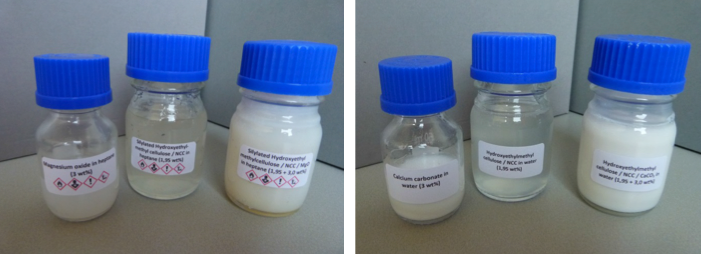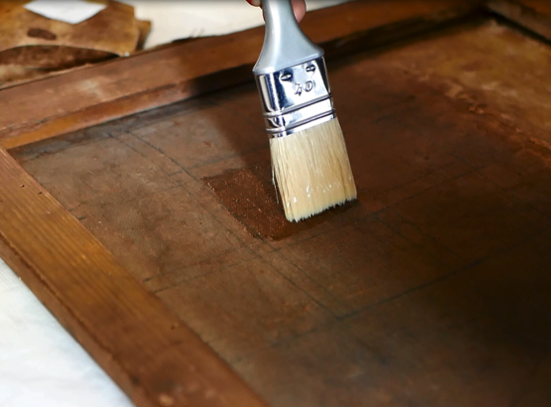WP3 - Hybrid functional nanosystems for the strenghtening of fibers
Conservative challenge
This WP addresses a crucial aspect of interventive conservation, the restoration of mechanical properties of a work of art. Examples are (i) painting canvases that are degraded and severely endanger the conservation of the paint layer; (ii) the paint layer itself; (iii) degraded polymeric surfaces where plasticizers have migrated out rendering the material brittle.
Canvas degradation results in deterioration of its mechanical properties and may ultimately affect the integrity of the paint layer. A common method for canvas consolidation is a lining operation in which the painted canvas is attached upon a new one. However, such a method possesses a range of drawbacks. Improving the mechanical properties of the existing canvas is a more attractive alternative. To this end, NANORESTART formulated systems capable of treating the material at different levels, i.e. yarn, thread, plain fabric, and provide reinforcement and deacidification to arrest the degradation and stabilize the artifact.

Formulations
- 25 polar systems: Dispersions of nanoparticles, polyelectrolytes, and cellulose fibers/crystals in water or ethanol (or blends). 25 formulations were developed, for the strengthening and deacidification of canvases. These formulatiosn were sorted in 3 families, each of them aiming at provided one or several functionnalities.
- 3 apolar systems: Dispersions of nanoparticles, and silylated cellulose fibers/crystals in apolar solvents. 3 formulations were developed, for the strengthening and deacidification of water-sensitive canvases.
Innovation
Two complementary strategies were used: the development of inorganic nanoparticles formulations for deacidificying canvases, and the application of cellulose based materials. The inorganic nanoparticles systems aim at arresting the degradation process while providing some mechanical reinforcement at the yarn/thread/fiber level. The application of nanocellulose on the canvas will strengthen the canvas in its whole by forming a film at the surface that can be seen as a nanolining. Polyelectrolyte-treated silica nanoparticles (SNP) and cellulose nanofibrils (CNF) can be combined to obtain canvas consolidation. The approach is innovative, as it used colloidal systems that are physico-chemically compatible to the original canvas cellulose, as opposed to traditional lining adhesives based on glues or synthetic polymers. This means that the long-term stability of the treated canvas will be enhanced. It also implies that the amount of material used to reach a sufficient strengthening is significantly reduced.

How do they work?
CNF forms a film at the canvas surface that increases ductility, while SNP penetrates deeper and reinforce at the fiber scale, yielding higher stiffness. These two effects can be balanced to reach a suitable reinforcement. The inorganic nanoparticles (e.g. calcium hydroxide, calcium carbonate) are able to neutralize the pH of acidic canvases, hindering the acid-based degradation of cellulose.
Besides aqueous and water-alcohol dispersions of particles, silylated cellulose was used to prepare dispersions of consolidants in organic solvents: this allows the treatment of highly water-sensitive canvases that cannot tolerate the contact with aqueous systems.
How are they applied?
These systems can be applied by brushing or spraying, which enables controling the solvent exposure of the canvas.

Case studies and application
These systems have been used to consolidate, strengthen and deacidify canvases from the 19th and 20th century.





